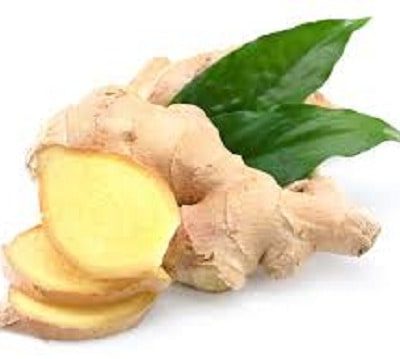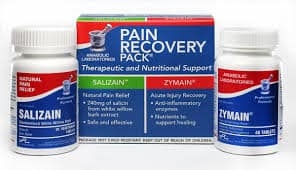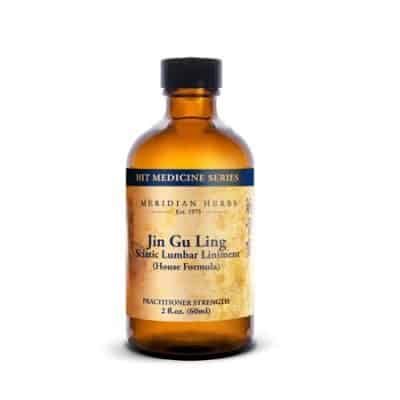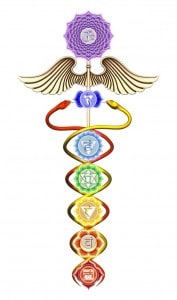 Back Pain
Back Pain
See also acupuncture, guided imagery, herbal medicine, healing transformation, stretching, trauma remedies
Acute and chronic pain effects over 100 million people in the United States each year. While pain is best known and characterized as subjective, meaning only the person who is experiencing it can explain what it feels like, pain is often called the Universal equalizer. Pain affects people differently. What may be perceived as only a minor nuisance to one person, may be completely debilitating to someone else. Pain is a warning that something isn’t quite right. Pain is not a disease in itself but the result of an underlying condition or due to injury. Pain is not just a physical sensation or psychological event, but a combination of these and other components.
Back pain can be caused by a variety of situations such as accidents, musculoskeletal disorders, improper lifting, bending, sports activities, misalignment of the vertebrae and/or disease. It can also appear out of nowhere with no obvious cause. A viral illness may possibly be a cause, or emotional trauma, such as fear or resentment. In the vast majority of cases, pain is caused by stasis of blood resulting in muscle spasm, trauma and immobility.
The pain may be acute or it may develop slowly over a matter of hours or days out of a minor discomfort. In acute form, back pain can render a person helpless, enabling them to get up from a sitting or lying position or to even feed, wash, or dress themselves.
In the vast majority of cases, acute back pain comes from muscle spasm. Many people with acute back problems think they are suffering from a slipped disc, pinched nerve, spinal subluxation, or a torn ligament or muscle, when in fact intense muscle spasm is the sole or primary cause. Spasm of back muscles is maintained by a nervous reflex through the spinal cord that sets up a vicious cycle: spasm and inflammation lead to more spasm and inflammation. Although the cycle can develop due to injury, the ultimate cause is often in the brain, which can interfere with muscle physiology through the spinal cord.
Pain is a vicious cycle: spasm and inflammation lead to more spasm and inflammation. Although the cycle can develop due to injury, the ultimate cause is often in the brain, which can interfere with muscle physiology through the spinal cord. Chronic (long term) and acute back (and neck) pain are common expressions of stress and emotional stress. This demonstrates the true complexity of the mind/body interaction. Many times it is the brain’s distortion of muscle function that sets us up for pain by preventing muscles from responding freely to physical stresses.
Acute pain can result from disease, inflammation, or injury to tissues. This type of pain generally comes on suddenly, for example, after trauma or surgery, and may be accompanied by anxiety or emotional distress. The cause of acute pain can usually be diagnosed and treated, and the pain is self-limiting, that is, it is confined to a given period of time and severity. In some rare instances, it can become chronic.
Chronic pain is widely believed to represent disease itself. It can be made much worse by environmental and psychological factors. Chronic pain persists over a longer period of time than acute pain and is resistant to most medical treatments. It can often cause severe problems for patients.
In assessing pain, a useful approach is to assess pain intensity (sensory), pain relief (cognitive), pain location, pain distress (affective), behavioral patterns or other similar sensory aspects of pain.
Without a doubt, added stress and strains can take its toll on your spinal and nervous system. Maintaining a physically fit body, awareness of body positions, a clean and detoxified internal system, keeping fears, stress and insecurities in check and careful execution physically, through each day are all great ways to avoid daily aches and pains.
Proper alignment of the head over the shoulders over the hips over the knees over the feet, are also imperative in maintaining a pain-free body. Firm abdominal muscles help to keep the back straight and strong. Bad posture habits can lock your muscles into positions you are not even aware your body is taking which can put unwanted strain on the lower back.
Source of Back Pain
Sciatica is a term used to describe pain that radiates down the legs, caused by the sciatic nerve in the lower back. The sciatic nerve is the largest and longest nerve in the body. It runs from the sacrum down both legs. There are branches that come off the main nerve, serving both sensory and motor functions of the buttocks, legs and feet. Sciatic nerve pain is often felt in combination with lower back pain. A common misconception about sciatica is that something in the back is pinching the sciatic nerve directly. Since the sciatic nerve does not actually meet the spine, it is impossible for this nerve to be pinched in the spinal column. The nerve roots from the spine branch out, and join up with the sciatic nerve further down the body. It is the compression of one of these nerve roots, that causes the symptomatic effects on the sciatic nerve. Learn these sciatic exercises to get relief!
Piriformis Syndrome is pain similar to sciatica, yet caused by a completely different source. In Piriformis Syndrome, the sciatic nerve is compressed by the piriformis muscle. This muscle is deep under the gluteals. The sciatic nerve passes directly under the piriformis muscle. The pain is similar to sciatica with pain in the buttocks, which radiates down the legs. Often, the differential diagnosis for Piriformis Syndrome is often by exclusion. If the patient has sciatic pain, but shows no spinal reason for a cause, piriformis syndrome is often indicated. The patient may experience tingling, numbness, burning, or weakness in the legs and buttocks. Symptoms are often worsened by long periods of sitting, due to direct pressure exerted on the piriformis muscle. Learn these piriformis exercises to get relief!
(TMS) for Tension Myositis Syndrome was coined by John Sarno, MD. “Most chronic (on-going) back pain is not due to structural injury but to unbalanced muscular contraction and inflammation resulting from an unbalanced pattern of nervous control of the muscular system”. This problem is called Tension Myositis Syndrome by John Sarno, MD. His record of clinical success based on just talking to patients and convincing them of the true nature of their pain. After hearing these talks, many of them report that the pain has disappeared for the first time in years. I have seen a great number of chronic back pain disappear as a result of people making radical changes in their emotional and mental life. Obviously, back pain can be in the form of real, physically distorted muscular pain,however, most often the pain is not all in the back. It is in the nervous system, and that system connects to the mind and the emotions.
Sarno states “Most people with chronic back pain go around thinking they have a bad back and that the trouble is there. In my experience all chronic back (and neck) pain should be considered TMS until proved otherwise, and most therapeutic effort should be directed at your head: specifically at changing your patterns of thinking, feeling, and handling stress that lead the nervous system into this abnormal pattern. Of course, if you have any history of back injury, that vulnerable spot will be a perfect focus for TMS”. Learn emotional release exercises to get relief!
Pain Cycles
For some people, pain can be tolerated at high levels; this is someone who has a high tolerance for pain, and others have a very low tolerance. For most people, pain is cyclical. Pain produces anxiety and this can intensify the pain. Fear and anticipation of physical problems can also heighten the pain leading to feelings of depression and helplessness. When one experiences this pain, we tend to limit our activities which can lead to a chronic “pain cycle”. This will adversely affect one’s confidence and self-esteem. Being aware of a chronic pain cycle and understanding its psychological effects, can help you avoid being drawn into the cycle.
In this cycle, which tends to begin with long periods of rest and inactivity, this causes a loss of physical strength, flexibility and endurance. As a result, you begin to lose confidence in your ability to do things, which causes you to lower your personal goals.
The inability to do your usual activities, then allows you feelings of frustration as you see yourself now as being unproductive which in turn, lowers your self-esteem and may further lead to depression.
When the lower end of the cycle comes around and you are feeling th pain less than usual, we then have a tendency to overexert ourselves in an effort to prove to ourselves and others that we are still capable of doing the things we could do before we had the pain.
As a result of the overexertion, the pain tends to return more severe than before. Discouraged and in pain, you begin limiting your activity again, therefore the cycle begins once more.
Source of Relief from Pain
1. Cold Applications: This application often feels best on acute injuries, where the pain is often hot to the touch or has a feeling of heat radiating from it. Ice numbs the area, reducing pain. It also constricts blood vessels, limiting blood supply to the injured site. This action decreases swelling. Ice can also decrease muscle spasms. If an area is painful to move or swells after exercise, use ice. Apply ice or a frozen object, such as a bag of corn from the freezer, to the injury. Be sure the area is protected from the cold application and not applied directly to the skin. The cold will reduce swelling and pain at the injured site. This step should be done as soon as possible. Apply the frozen object to the area for 20 minutes, every two to three hours for the first 48 hours.
2. Hot Applications: This application is often most effective for chronic injuries or pain that is cold to the touch or has cold radiating from it. It is very useful with injuries agitate by cold or damp weather. Heat increases local blood supply, bringing healing cells to the area and potentially relaxing tight muscles. Use moist, hot towels or microwavable heat packs for no more than 10 to 15 minutes several times a day. Never sleep on a heating pad.
3. Anti-inflammatories from aspirin to herbal compresses, anti-inflammatory applications can reduce the recovery time by half if done within the first 24-48 hours of an injury or painful attack.
4. Acupuncture: has been proven to decrease pain, reduce swelling and increase blood circulation in order to speed the healing process. Electro-stimulation acupuncture is also recommended for sciatica, piriformis syndrome, pain after surgery, whiplash or accidents. In Chinese Medicine, cupping is done in order to move blood from the injured area which may be stagnant resulting in pain. This is a very effective method used to decrease the amount of time it takes for the area to heal.
5. Rest: This can be the best medicine for any condition from a cold to a broken bone. Rest rejuvenates, repairs and reassembles. For acute injury, rest and protect the injured area. If it hurts to bear weight on the injury, use crutches, if it hurts to move the area immobilize it with a splint.
6. Compression and elevation tend to go hand in hand. Compress the injured site by applying an Ace bandage. This will decreases swelling of the injured region. Although the wrap should be snug, make sure it is not too tight as this can cause numbness, tingling, or increased pain.
7. Elevation of the injured area above the level of the heart as much as possible. This technique will also assist in reducing the amount of swelling to the injured site.
8. Exercise conditioning and stretching: certain pains can improve from stretching such as painful stiff muscles and joints by increasing blood flow to these areas. Weight baring exercises are beneficial for improving strength and bone density. Restoring movement and normal function to an injured area is critical. Learn to stretch to improve your flexibility.
9. Dietary Changes: So many aches and pains can be eliminated by the proper foods we choose to eat. Weight gain affects our joints, heart, circulation and blood pressure among other conditions. Change your diet and change your life.
10. Root Cause Treatment Pain is the result of injury or disease. With acute pain, the cause is often obvious. A fall resulting in a painful scrape or twisted ankle. In chronic pain, often the pain has been with you for so long, it is hard to pinpoint the real cause or root cause of the disorder. Most alternative health therapies see the occurrence of disease as the results from an imbalance. The treating of the root of primary cause of disease is what makes a root cause treatment very effective in the long term. It does not just treat the symptoms of that disease.
Managing Your Pain
R.I.C.E.
RICE is the acronym used for Rest, Ice, Compression and Elevation. It is used as the best initial treatment of soft tissue injuries such as sprains, strains, and contusions. The combination of RICE helps reduce inflammation that occurs after acute injury. It is important to remember that the earlier this treatment is put into place, the more effective it is.
Aspirin Therapy known as acetyl-salicylic acid, aspirin is the oldest and most widely used pain medication. Aspirin works by suppressing the product of prostaglandins. These hormone-like substances stimulate the nerve endings that send pain messages to the brain. Long term use of aspirin may also cause unwanted side effects, such as: stomach bleeding, bleeding in the brain, kidney failure, and other kinds of strokes.
There may be a benefit to daily aspirin use if you have some kind of heart or blood vessel disease, or if you have evidence of poor blood flow to the brain. Consult your doctor before you begin any aspirin therapy regimen. Aspirin should not be given to children under the age of 18 because of an increased risk of Reye’s Syndrome.
NSAIDS – Nonsteroidal Anti-inflammatory drugs are also prostaglandin inhibitors. These are promoted as stronger, yet gentler alternatives to aspirin. People can often tolerate these better because they are given in smaller dosages. NSAIDS seem to be more effective against bone and dental pain. These drugs include: ibuprofen, naproxen and ketoprofen.
COX2 Inhibitors work by blocking an enzyme called cyclooxygenase-2, or COX2. These enzymes produce the prostaglandins that cause inflammation.
“Andrew’s Best Remedies”
-
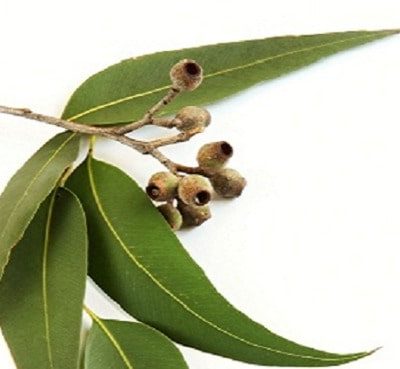
Angel’s Mist Eucalyptus Essential Oil
$ 9.00 -
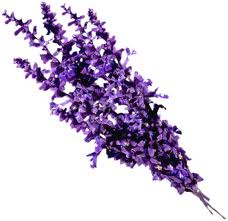
Angel’s Mist Lavender Essential Oil
$ 9.00 -
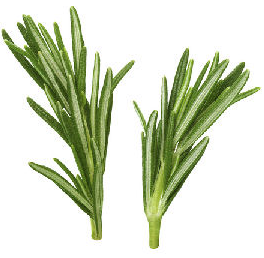
Angel’s Mist Rosemary Essential Oil
$ 12.00 -
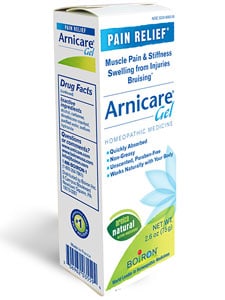
Arnica Gel
$ 16.95 -
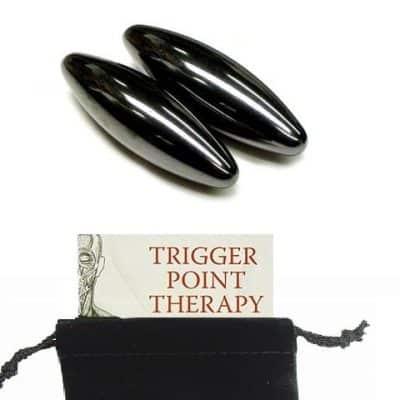
Trigger Point Therapy Kit
$ 34.95 -

The Body Crystals ™
$ 14.95 -
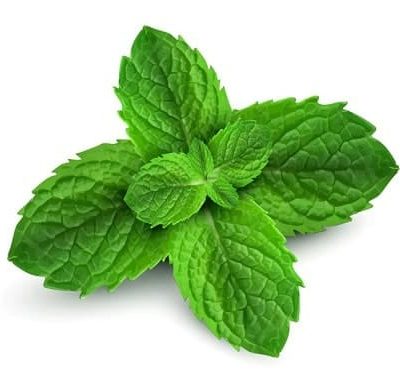
Angel’s Mist Peppermint Essential Oil
$ 9.00 -
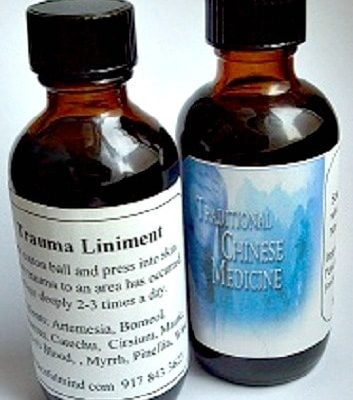
Trauma Remedy
$ 19.95 -

T-Relief Pain Ointment
$ 24.95 -

T-Relief Pain Tablets
$ 21.95 -
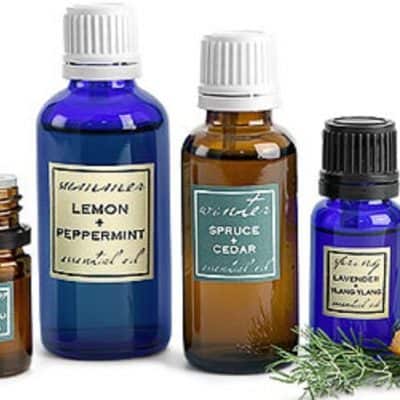
Angel’s Mist Aroma Remedy Blends
$ 19.95 -

Trauma Remedy Pills
$ 48.00 -

Wu Yang Pain Relieving Plaster
$ 21.95 -
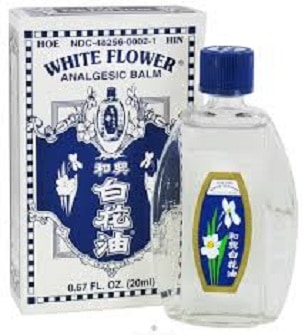
White Flower Oil
$ 14.95 -

Taoist Oil
$ 29.95 -

Arthritis Pain Cream
$ 19.95 -
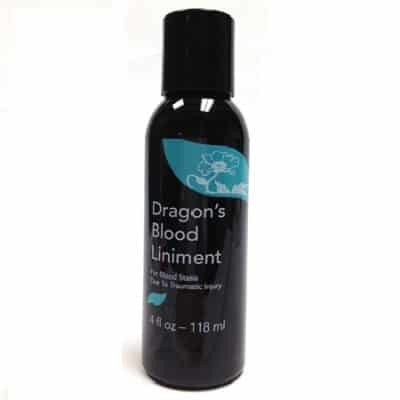
Dragon’s Blood Pain Liniment
$ 28.00 -
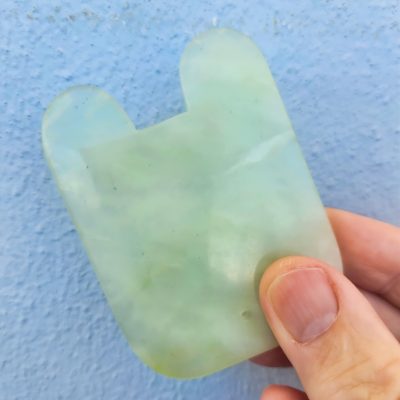
Jade Gua Sha Tool
$ 34.95
Exercises
Exercise is very important on so many levels.
Proper alignment of the head over the shoulders over the hips over the knees over the feet, are imperative in maintaining a pain-free body. Firm abdominal muscles help to keep the back straight and strong. Bad posture habits can lock your muscles into positions you are not even aware your body is taking which can put unwanted strain on the lower back.
Exercise conditioning and stretching can improve certain pains with stretching such as painful, stiff muscles and joints by increasing blood flow to these areas. Weight baring exercises are beneficial for improving strength and bone density. Restoring movement and normal function to an injured area is critical. Learn to stretch to improve your flexibility.
Exercise increases the output of endorphins, which are hormones your body produces to fight pain.
Serotonin is a hormone that assists the flexibility of our blood vessels. Exercise increases the brain’s supply of serotonin. This is important because when blood vessels are flexible, they are less likely to cause pain or irritation. Serotonin also improves mood, helps regulate sleep cycles and fights the pain response in the brain. It fights pain by blocking the brain’s perception of pain.
Estrogen, the sex hormone that can interfere with serotonin, is stabilized with exercise.
Exercise should include cardiovascular aerobic activity 3- 4 times weekly. Weight baring exercise for 30 minutes to strengthen and maintain bone and muscle mass.
Exercise that promotes endurance (aerobic exercise such as brisk walking, bicycling, and jogging) or muscle strength (resistance training with free weights or weight machines) helps prevent coronary artery disease. People who are out of shape or who have not exercised in a long time should consult their doctor before they start an exercise program.
Properly stretch and warm up before placing any physical demands on your body and pay attention to what you body is telling you. Stop exercising before you feel pain or discomfort.
Your doctor can provide a safe and effective exercise plan based on your needs.
Be careful not to over exercise! Weekend warriors also have a tendency to “push” to hard to makeup for the time they have not exercised during the week. The two MOST BENEFICIAL exercises you can do to strengthen your back and relieve pain are the BACK STRENGTHENER and ABDOMINAL WORK.
If back pain does not result from acute trauma, then it tends to be from weakness and poor posture. It can result from standing and over reaching across a table or desk repeatedly. It can be caused from sitting in a chair and pitching forward for too long a period of time. With lack of support behind you, the muscles strain to keep you at a 45 degree angle.
The wear and tear or weakness is also due to the fact that we take our back for granted, assuming it will always hold us up. But like every muscle, if it is not properly used, strengthened, and supported, it will strain and pain from overuse, under-use or abuse.
Poor body alignment is also the result of not paying attention to how you sit, stand, and walk. Walking with your neck craned forward and hips back, create strain in the upper and lower back. Shoulders rounding forward and your core abs not contracted results in pulling your lower back off center and not aligned with your hips and legs.
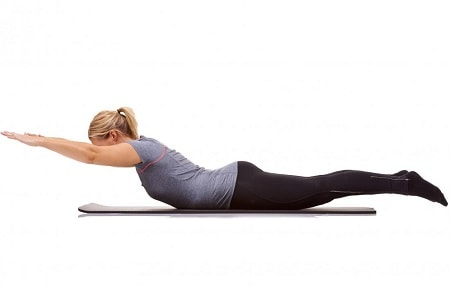
Exercise: Back Strengthener
Do this exercise up to 4 times a day. Lay on the floor, stomach down. Slowly lengthen out the spine as you raise one arm and the opposite leg. Exhale as you raise up into an arch. Hold this as your take two deep breaths. Slowly release back to the floor. Inhale, as your raise up the other arm and opposite leg, exhale. Hold this arch again for two deep breaths. Lower down. Inhale. Then raise both arms, leaving both feet on the floor. Exhale. Hold the arch as you take two deep breaths. Slowly lower down. Inhale.
Raise both feet off the ground, leaving both arms on the floor. Exhale. Hold the arch for two deep breaths. Slowly lower down. Inhale. Lastly, raise both arms and both legs off the floor. Exhale. Hold this full arch for two deep breaths. Slowly lower down. Inhale. Repeat entire sequence one more time. This exercise should flow easily with the breath. (Always feel the energy pulling out in both directions from the top of the head and hands and out the bottom of the feet.) Try to arch up further each time. This amazing exercise will relieve back pain!
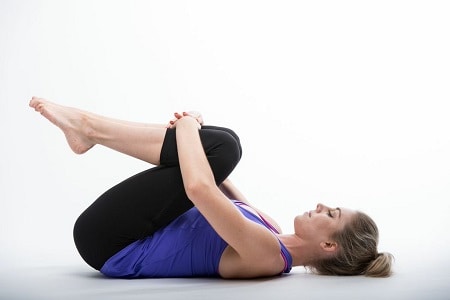
Exercise: Abdominal Work
Ab work can be done on a daily basis. By strengthening the abdominal wall you are helping to support the lower back. 300, 400, 500 sit-ups are not only a waste of time but allows for that many more attempts to injure yourself. It is the quality not the quantity of sit ups that makes all the difference. SLOW and controlled is the most powerful approach.
Stretching a sore back will actually enhance the healing process. One good stretch for lower back pain is to gently bring your knees up to your chest. Once there, put a little pressure on your knees. Stretch, then relax. Repeat. Stretching will help the muscle calm down sooner than just waiting for it to calm down on its own.
Herbal Remedies
Herbal medicine is a wonderful solution for pain and trauma injuries. Complications can arise when taking herbal medicine and allopathic drugs internally, which your doctor has prescribed. Great caution should be used especially if you are on blood thinners, diuretics or heart related medication. Consult your doctor with any questions you may have, before taking additional herbs or supplements, internally.
Arnica Suave is a rich blend of quartz silica, amber resin and the pain-relieving power of arnica in a special massage-in suave designed by Andrew for his practice and is a part of his new “Crystal Inspirations” product line.
Boswellia has unique anti-inflammatory action, much like the conventional non-steroidal anti-inflammatory drugs (NSAIDs) used by many for inflammatory conditions. Unlike NSAIDs, however, long-term use of boswellia does not lead to irritation or ulceration of the stomach.
Bromelain is a plant-enzyme. Bromelain is not actually a single substance, but a group of protein-digesting enzymes found in pineapple juice and in the stem of pineapple plants. Local swelling is the releasing of histamines in a localized area causes the vasodilation and increased permeability of blood vessels. Bromelain has an anti-inflammatory effect and is a very effective treatment for Rheumatoid Arthritis. It is recommend taking 200 to 400 milligrams three times a day on an empty stomach at least ninety minutes before or three hours after eating. Discontinue use if you develop any itching or rash.
Cayenne Pepper (Capsaicin) Cayenne can be taken as an herbal extract or tincture, under the tongue or in a class of water. A cream containing small amounts of Capsaicin can help relieve pain when rubbed onto muscle pain and arthritic joints, according to the results of a double blind study. A topical cream does this by depleting the nerves of a pain-mediating neurotransmitter known as substance P. Although application of capsaicin cream may initially cause a burning feeling, the burning will lessen with each application and soon disappear for most people. A cream containing 0.025-0.075% of capsaicin can be applied to the affected joints three to five times a day.
Devils Claw: An analgesic and anti-inflammatory. Dosage: one to two grams, three times daily. This can be taken as an herbal extract (tincture) or in herbal tea form.
Ginger: An anti-inflammatory. Ginger has been used in Ayurvedic and Chinese medicine as an anti-inflammatory. Taking 6-50 grams of fresh or powdered ginger per day indicated that ginger might be helpful. Suggested Dosage: 0.5 to 1 mg of powdered ginger daily
Ginger Tea: Add one grated teaspoon of fresh ginger to a cup of hot water. Take two times daily. Add ginger granules to hot water, dissolve, and drink.
Glucosamine sulfate (GS), a nutrient derived from sea shells, contains a building block needed for the repair of joint cartilage. GS has significantly reduced symptoms of osteoarthritis. All published clinical investigations on the effects of GS in people with osteoarthritis report statistically significant improvement. Most research trials use 500 mg GS taken three times per day. Benefits from GS generally become evident after three to eight weeks of treatment. Avoid if you have any allergic reactions to shell fish.
Glucosamine stimulates the production of the specific elements of cartilage and protects them. It helps your body repair worn cartilage, reduce pain and improve function. Chondroitin attracts fluids into proteoglycans, the molecules dispersed through out the cartilage that give the tissue its shock-absorber quality, and protects the cartilage against breakdown. These are substances the body already produces for itself in small amounts.
Glucosamine is found in almost all tissue; it has a role in the repair and maintenance of joint cartilage. Chondroitin sulfate is a major component of cartilage and is thought to inhibit the enzymes that contribute to the breakdown of cartilage.
S-adenosyl methionine (SAMe) possesses anti-inflammatory, pain-relieving, and tissue-healing properties that may help protect the health of joints.SAM-e is derived from methionine, an essential amino acid; it may promote cartilage formation and repair. Glucosamine and chondroitin sulfate are usually sold together. In clinical studies, the supplements had to be taken for several weeks before providing any pain relief. Don’t forget the truly natural and proven methods for battling osteoarthritis, lose excess weight and exercise.
Licorice root: An anti-inflammatory. Long-term use can elevate blood pressure and increase potassium loss. Dosage: one-eighth to one-quarter teaspoon of a 5: 1 solid extract up to three times daily.
Turmeric: An effective anti-inflammatory. Dosage: 400 mg three times daily; take on an empty stomach and combine with 1,000 mg of bromelain
White Willow Bark: Anti-inflammatory and pain-relieving effects. White Willow bark has anti-inflammatory and pain-relieving effects. Extracts providing 60-120 mg salicin per day are approved for people with rheumatoid arthritis. Although the analgesic actions of willow are typically slow-acting, they last longer than aspirin.
Herbal Combinations and Formulas
Herbal tinctures are concentrated liquid extracts of the medicinal properties of herbs. Shake the tincture bottle well. As a dietary supplement, place 1 to 3 droppers full ~ approximately 1 tablespoon or 40 drops, under the tongue, or in juice or water as needed, 2-3 times a day.
Chill Out: Valerian, St. Johns Wort, Passion Flower, Scullcap, Blue Vervain.
Circulation Support: Hawthorn berries, Ginger, Angelica, Bayberry Bark, Hyssop, Prickley Ash bark, Cloves, Cayenne.
Night Cap: Valerian, Hops, Scullcap, Passion Flower.
Muscle Calm: Wild Yam, Black Cohosh, Cramp bark, Scullcap, Angelica, Peppermint, Tumeric
PMS Support: Dong Quai, Wild Yam, Cramp bark, Squawvine, Black Haw, Chasteberry, Blue Cohosh.
Homeopathy
This medical system uses infinitesimal doses of natural substances to stimulate a person’s immune system and body’s natural defenses. Homeopathic remedies are named for the plant or animal ingredients they are made from. Homeopathy not only offers relief from temporary disorders but, can provide long term healing of a person due to its individual and “holistic” approach. This type of healing makes it easier and possible to avoid recurrence or relapses in the future and homeopathy stimulates the body’s natural defense system by reestablishing normal immune system and cell functioning.
Back Pain:
Arnica is indicated for injuries of all kinds (sports, accidents) such as sprains, dislocations, contusions, effusions of blood and effusions into a joint, fractures, etc; inflammatory processes and degenerative processes associated with inflammation.
Arnica 30x for overall pain and pain management, Arnica is the #1 homeopathic pain reliever.
Actaea Racacemosa 6c if symptoms occur such as severe aching during menstruation and extends down through the hips, buttocks and thighs.
Bellis Perennis 30x for symptoms of acute and chronic back pain Bellis is thought of as “Arnica for the lower back” and can bring relief.
Rhus Toxicodendron 6c if symptoms occur at first movement but improves after gently, continuous motion. Aching may be brought on by cold,damp weather and relieved with warm showers/baths.
Aromatherapy Remedies
Aromatherapy Some of the best remedies for pain are in the form of essential oils. Helpful, are essential oils of basil, clove, camphor, menthol, eucalyptus, ginger, black pepper, wintergreen and peppermint, rosemary oils and are all beneficial for pain management.
Basil: contains several antioxidants in its volatile oils that act just like some non-steroidal anti-inflammatory drugs such as ibuprofen and Celebrex. When isolated at high enough concentrations these oils worked as well as ibuprofen, Naproxen, and aspirin in research trials.
Camphor is a white transparent waxy crystalline solid with a strong penetrating pungent aromatic odor. As an antimicrobial substance, camphor is readily absorbed through the skin and produces a feeling of cooling similar to that of menthol and acts as slight local anesthetic. In larger quantities, it is poisonous when ingested and can cause seizures, confusion, irritability, and neuromuscular hyperactivity. Found in our White Flower Oil.
Clove: this intense oil, most commonly used to relieve dental pain and infection, is also used to dissolve the eggs deposited by intestinal worms. It is delicious but overwhelming in both smell and taste. It is an antiseptic, carminative, warming, and very aromatic oil.
Eucalyptus: reduces pain, spasms and inflammation, and stimulates local blood circulation and the removal of waste products and toxins from the tissues. It is used to treat muscular aches and pains, strains, sprains, and other traumatic injuries of the muscles, ligaments and tendons. It also helps to reduce nerve inflammation and pain and is useful for the treatment of the various kinds of neuralgia such as sciatica. Eucalyptus reduces pain and inflammation due to chronic arthritic conditions. It also has a mild clearing and stimulating effect on the mind which helps to reduce fatigue.
Ginger: This rich, spicy oil so often used for nausea also helps normalize blood pressure either by raises blood pressure by restricting external blood flow, or lowers it by dilating surface blood vessels. This oil is warming and an antiseptic.
Menthol is actually a compound obtained from peppermint oil or other mint oils or made synthetically. Menthol has local anesthetic and counter-irritant qualities. It is contained in nonprescription products for short-term relief of minor sore throat and minor mouth or throat irritation. Menthol is also contained in combination products used for relief of muscle aches, sprains, and similar conditions. Menthol is often used with other ingredients such as camphor and eucalyptus for pain relief. Menthol is considered an antidote for many homeopathic remedies and should be avoided by people taking them. Found in our White Flower Oil.
Peppermint: acts as a muscle relaxant, particularly in the digestive tract, and it can also reduce the inflammation of nasal passages and relieve muscle pains. When massaged into the skin, peppermint oil plays an innocuous trick on the nerves: It stimulates those that produce a cool, soothing sensation and desensitizes those that pick up pain messages.
Rosemary: This culinary delight is also a great remedy for pain. Studies show that this oil improves general circulation.
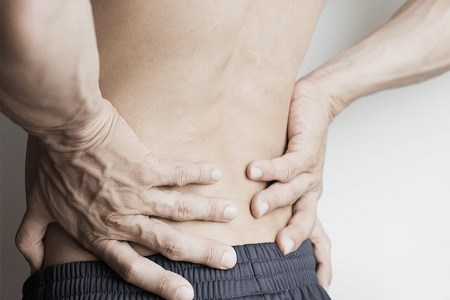
Quick Back Pain Rub
Use a tablespoon of Vaseline, base oil (almond, jojoba, canola…) or body lotion.
INGREDIENTS:
Add 11 drops of ginger
9 drops cayenne pepper
5 drops eucalyptus essential oils.
DIRECTIONS:
Mix ingredients together. Massage pain rub into lower back 3 times a day.
Pain & Trauma Rub
Both the mental and physical stimulation of this blend helps relax the muscles and provides a deep warmth for increased blood flow and healing. Many essential oils are excellent choices for topical applications for the relief of pain, and leave your skin feeling smooth and elastic afterward.
INGREDIENTS:
1 Tablespoon sweet almond oil
3 drops Oregano Oil
4 drops Peppermint
2 drops Cedarwood
2 drops Lavender
DIRECTIONS:
Mix well and apply topically to where needed with gentle massage.
Hydrotherapy
The mysterious and amazing healing power of water has been utilized for centuries. Water cleanses, refreshes and restores all life. We are always drawn to water. Be it a soothing fountain or majestic waterfall. Water is a carrier. It flows. It moves along the line of least resistance to find its way to the ocean where comes and goes in the ebb and flow of tides and waves. The appeal is inexplicable! We crave water, maybe because our bodies are made up of a large percent of it. Maybe because we instinctively know how it can heal us.
Hydrotherapy is the use of water in any form, in the treatment of dis-ease.
Epsom Salts are a rich source of magnesium. Magnesium helps to regulate the activity of more than 325 enzymes and performs a vital role in orchestrating many bodily functions, from muscle control and electrical impulses to energy production and the elimination of harmful toxins. Epsom Salt also delivers sulfates, which are extremely difficult to get through food but which readily absorb through the skin. Sulfates serve a wide variety of functions in the body, playing a vital role in the formation of brain tissue, joint proteins and the mucus proteins that line the walls of the digestive tract. Sulfates also stimulate the pancreas to generate digestive enzymes and are believed to help detoxify the body’s residue of medicines and environmental contaminants. Soak in a tub full of hot water with a few cups of Epsom Salts. This is good for relaxing muscles and drawing toxins from the body. When magnesium sulfate is absorbed through the skin, such as in a bath, it draws toxins from the body, sedates the nervous system, reduces swelling, relaxes muscles, is a natural emollient, exfoliator, and much more. Soak for 15-20 minutes.
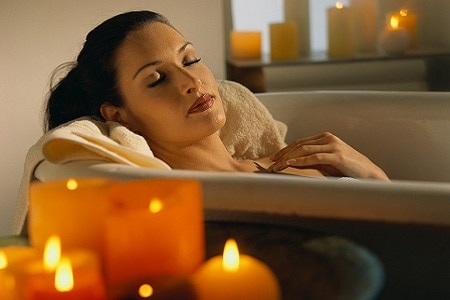
Back Pain Bath
Combine 12 drops lavender essential oil, 5 drops clove oil, and 3 drops peppermint oil, directly into hot running bath water. Relax in the hot water for 15 – 20 minutes.
Pepper & Salt Bath
1 cup of Epsom salts
1 cup or Sea Salt
1 cup crush red peppers
15 drops of camphor oil
6 drops of ginger oil
3 drops of a eucalyptus.
Mix ingredients and add to hot, running water. Relax in the bath for 15-20 minutes. Rinse off, dry off, and clean your tube!
Nutritional Advise
Water should be a very important part of any nutritional program. Distilled water is best. 6-8 8 ounces per day. Water allows for the cleansing and free flow in the system.
Have dietary control over high fat, hydrogenated, partially hydrogenated and high saturated fat intake. These fats convert into a compound called prostaglandin, which promotes inflammation and pain.
Limiting the amount of fat to no more than 25 to 35% of daily calories is recommended to promote good health.
A low-fat diet also helps lower high total and LDL (the bad) cholesterol levels, a risk factor for coronary artery disease.
The type of fat consumed is important. There are three types: saturated, monounsaturated, and polyunsaturated.
Saturated fats are found in meats, non-skim dairy products, and artificially hydrogenated vegetable oils. The more solid the product, the higher the proportion of saturated fats.
Monounsaturated fats are found in olive oil and canola oil.
Polyunsaturated fats include omega-3 fats, contained in deep-sea fatty fish (such as mackerel, salmon, and tuna), and omega-6 fats, contained in vegetable oils. The ideal combination of types of fats is unknown. However, a diet high in saturated fats is known to promote coronary artery disease, and a diet high in monounsaturated or omega-3 fats is less likely to do so. Therefore, eating fish regularly is recommended.
Consider the Full Spectrum Diet, which includes: phytochemicals (5-7 servings of fruits and vegetables daily), 30 grams of fiber, riboflavin (found in red and purple grapes, red wine and black tea).
Eliminate: butter, all fried foods, margarine, red meat, shellfish, shortenings or tropical oils (such as coconut and palm oils).
Make soups using plenty of onions, garlic, green leafy vegetables, ginger, burdock root and turmeric root.
A diet that includes Flaxseed, flaxseed oil and fish oils contain omega-3 polyunsaturated fatty acids and decrease pain. Omega-3 fatty acids help lower cholesterol, may help reduce the risk of irregular heart rhythms and may also improve certain factors, like high blood pressure.
Calcium and Magnesium can be effective for pain associated with muscle spasms. Take 500 mgs of each, two-three times per day.
Vitamin C and an equal amount of bioflavonoids has shown to be very beneficial for pain syndromes, especially low back pain. Take 1000 mgs of vitamin C two-three times per day, based on bowel tolerance.

The Full Spectrum Diet
As a Nationally Certified Herbalist and Licensed practitioner of Acupuncture and Chinese Medicine, Andrew Pacholyk, MS, L.Ac. has spent years developing a natural healthcare plan, which incorporates the benefits of fresh, full spectrum foods based on their color and their properties. A balance of attractive colors in the foods you eat, play an instinctual part as to what the body needs in the moment. The color energy of fruits, vegetables, vitamins and minerals all come into play when furnishing your body with the proper nourishment.
This easy to use system monitors healthy weight by the colors of food on your plate!
The Full Spectrum Diet is based on the proponents of color therapy and the holistic principles of eating mindfully, eating to nourish the body and seeing food in a more natural and spiritual way. Meals rich with different colored fruits, vegetables, meat, chicken, fish and whole grains means you are getting a healthy variety of nutrients that your body needs.
It is a simple way to eat healthy in order to achieve healthy results! Want to know more?
Traditional Chinese Medicine
Traditional Chinese Medicine (TCM) is the oldest, continually practiced, and professionally administered health care system in the world. It is a documented medical system spanning over 2,500 years based on comprehensive philosophies, rational theories, clinically tested and empirically verified by over 100 generations of highly educated practitioners.
Chinese Medicine is a total system of internal medicine, which is comprised of a diagnostic procedure based on signs, symptoms and treatment styles including acupuncture, herbal medicine, exercise, diet and meditation. It’s foundation is based on the principles of balance; the interdependent relationship of Yin and Yang. Through this balance, health is achieved and maintained.
Acupuncture has long been recognized as an effective treatment for chronic pain. In 2012, a study found acupuncture was better than no acupuncture or simulated acupuncture for the treatment of four chronic pain conditions:
- Back and neck pain
- Osteoarthritis (your doctor may call it “degenerative joint disease” or “wear and tear arthritis)
- Chronic Sciatica
- Lumbar and fascia pain
The National Institutes of Health calls the study “the most rigorous evidence to date that acupuncture may be helpful for chronic pain.”
Doctors learn more about acupuncture each year. But still, no one fully understands how acupuncture works. Does it boost your body’s painkilling ability? Does it affect your blood flow? Can it help your body manage depression to promote further healing? Scientists continue to study. Learn what we DO know…
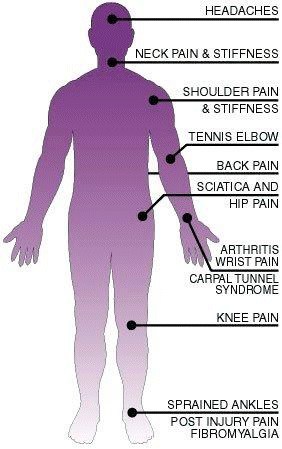
Trigger Point Therapy
Trigger Point Therapy or Myofascial Therapy is a unique treatment protocol for the treatment of myofascial pain. Trigger Points produce pain locally and in a referred pattern and often accompany chronic musculoskeletal disorders. The purpose of trigger point therapy is to eliminate pain and to re-educate the muscles into pain-free habits. Treatment of trigger points involves the application of sustained pressure for a period long enough to release the muscle spasm, which is causing the pain. The Trigger Point Therapy procedure is one of the most powerful, yet simplest ways to treat muscle pain. Based on the idea that pain in a certain muscle group stems from where the muscle insertion is, the particular muscle group innervates and its origin, great relief can be accomplished by massaging these regions.
The muscles involved with pain are frequently found by recognizing the “pain pattern”.
1. A history of widespread pain of at least 3 months in duration.
2.Widespread pain falls into the following categories:
* Present- pain on the left side of the body
* Pain on the right side of the body
* Pain above and below the waist
* Plus axial skeletal pain (cervical spine or anterior chest or thoracic spine or low back) must be present.

Acupuncture for Back Pain
Back pain is the No. 1 reported reason for seeking acupuncture. The good news is chronic low back pain is one of the conditions that research suggests acupuncture may be an effective tool for treating. One recent review of 22 acupuncture studies showed that it provided short-term relief from chronic back pain. It also showed there was greater improvement in pain for people who got acupuncture compared to those who did not. It’s believed the effects come from stimulating the central nervous system. This may trigger the release of chemicals into the muscles, spinal cord, and brain. These chemicals either alter the experience of pain or produce bodily changes that promote a sense of well-being.
DIY Acu-Pressure
Acupressure is a great way to relieve congested areas, improves blood circulation, relax the muscles and increase metabolism. Use your index finger or thumb. Apply pressure slowly, gradually increasing, before you release. 1 or 2 minutes for each point.
Try these points for back pain:
Ren 6 (Sea of Qi) is located on the anterior median line of the lower abdomen, 1.5 cun (inches) below the umbilicus.
Indications: Abdominal pain, diarrhea, constipation, Enuresis, Hernia, Spermatorrhea, impotence, Irregular menstruation, amenorrhea, Emaciation due to consumptive disease, opposing muscles of the lower back for back pain.
Large Intestine 4 Hegu (Joining Valley) is located on the dorsum of the hand, between the 1st and 2nd metacarpal bones, in the middle of the 2nd metacarpal bone on the radial side. Command Point of the head and face. For headache and bodyache, every type pf pain and psychogenic tense. Use in conjunction with LIV 3 (the Four Gates) to strongly move the qi and blood in the body in order to remove stagnation and alleviate pain.
LIV 3 (the Four Gates) is located on the dorsum of the foot, in the depression proximal to the 1st metatarsal space.
Urinary Bladder 23 Shenshu (Kidney Shu) is located on the back, 1.5 cun (inches) lateral to the lower border of the spinous process of the 2nd lumbar vertebra. Indicated for enuresis, dysuria, edema, Spermatorrhea, impotence, irregular menstruation, leukorrhea, deafness, tinnitus, cough, asthma, Hemiplegia, lumbar pain, bone disease.
Urinary Bladder 47 Hunmen (Door of the Ethereal Soul) is located on the back, 3.0 cun (inches) lateral to the lower border of the spinous process of the 9th thoracic vertebra. Indicated for chest congestion and hypochondrium, vomiting, diarrhea, Back pain, and alleviates pain.
Massage
There are many different approaches to massage and applications of it. “Massage Therapy” is a holistic procedure that affects all systems of the body; digestive, elimination, respiratory, circulatory, lymphatic, endocrine and nervous systems. Many of today’s health problems arise from stress. Pain can trigger stress and just the opposite is true as well. Because stress upsets the delicate integral balance of all your body’s functions, regaining this balance requires a holistic approach.
Massage for pain is effective by detoxing the whole system and can be done with soothing pain relief massage oils or relaxing body lotions in order for the practitioner’s hands to “glide” over the body with smooth, relaxing strokes.
CranioSacral Therapy
CranioSacral Therapy (CST) is a gentle hands-on method of evaluating and enhancing the function of the craniosacral system – the physiological body system comprised of the membranes and CSF or cerebrospinal fluid that surround and protect the brain and spinal cord.
CST enhances the body’s natural healing processes to improve the operation of the central nervous system, dissipate the negative effects of stress, enhance health and strengthen resistance to disease. The method generally requires only a very gentle touch to test for restrictions in various parts of the craniosacral system. Often the evaluation alone will help solve the presenting problem. Among the dis-ease conditions for which CranioSacral Therapy has shown to be effective are: migraine headaches, neck and back pain, hyperactivity, Attention Deficit Disorder, Autism, learning disorders, Chronic Fatigue, Fibromyalgia, depression, emotional difficulties, Infantile Disorders and Post-Traumatic Stress Disorder.
Chiropractic Care
Chiropractic care is a science, art, and philosophy of healing that has been practiced around the world for nearly 5000 years. Physicians in ancient China used spinal manipulation or tuina to help their patients, as did Hippocrates. Chiropractic care has gained respect as a safe, drug-free, and natural treatment for: headaches, joint pain, spinal disk conditions, and strains, sprains, and other injuries. Chiropractic can also offer significant relief for allergies, asthma, digestive problems, and other disorders.
Chiropractic care works by strengthening and balancing the nervous system in order to promote the healthy functioning of the body. Your central nervous system consists of your brain, spinal cord, and all the nerves of your body, and it controls the function of virtually every cell, tissue, organ, and bodily system. One of the most common causes of nervous system disruptions is subluxation or joints that are locked up, fixated, and not moving properly. Chiropractic care includes gentle massage and manipulation of the spine and extremities to restore proper joint function and strengthen supporting muscles and soft tissues.
SomatoEmotional Release
SomatoEmotional Release (SER) is a therapeutic process that helps rid the body and mind of the residual effects of past trauma and associated negative responses. Its origins date to the discovery in the late 1970’s by John E. Upledger, DO, OMM, and biophysicist Zvi Karni, PhD, that the body often retains rather than dissipates physical forces resulting from an accident, injury or emotional trauma. The trauma causes the body to isolate the dysfunctional area, creating what Dr. Upledger has termed an “Energy Cyst”.
Although a reasonably healthy body can work and adapt to Energy Cysts, extra energy is required to perform normal bodily functions. As years pass, the adaptive pattern of the body loses its effectiveness. Symptoms and dysfunctions begin to appear that become increasingly difficult to ignore or suppress.
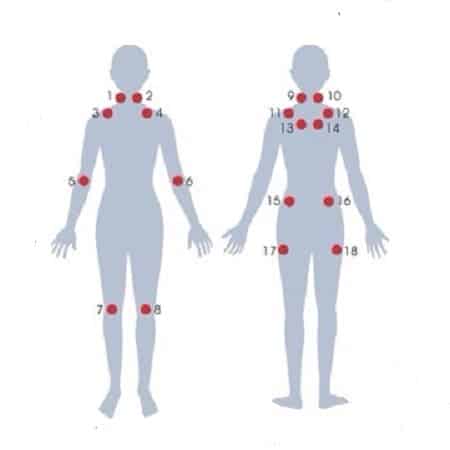
“Trigger Point Techniques”
The Trigger Point Therapy procedure is one of the most powerful, yet simplest ways to treat muscle pain.
Based on the idea that pain in a certain muscle group stems from where the muscle insertion is, the particular muscle group innervates and its origin, great relief can be accomplished by massaging these regions. A tennis ball, crystal sphere or large tumblestone is a great way to do Trigger Point Therapy.
Trigger Point Elimination Techniques
1.With either a With a tennis ball, crystal sphere or large tumblestone, lay on the floor and place the tennis ball under you in the points between and under the shoulder blades. Massage the area by gently rocking over the tennis ball.
2. Move the ball around to different trigger points on your back. The trapezius muscles at the base of the neck
3. The occiput at the base of the skull
4. The dimples of the buttock, is where we hold a lot of tension that crawls all the way up the spine to the behind the shoulder blades, which in turn burn up to the base of the skull.
5. Let your body relax over the tennis ball, crystal sphere or large tumblestone until the tension dissolves.
6. Still lying on the floor, when the ball is under your upper back and neck, rotate the arm slowly along the floor to over your head and slowly back.
7. When the ball is under the right buttocks, with the foot flat on the floor, slowly lower the right knee to the floor on the right side. Move to ball to the left buttock and repeat the motion.
8. Use the tennis ball, crystal sphere or large tumblestone on each one of the 18 trigger points. Gently massage these areas.
9. This is often a painful procedure. The trick is to find your pain threshold, then pass it. Once, you stand up, you will understand how you got the amazing results.
10. Always use the breath when working with the tennis ball, crystal sphere or large tumblestone. Inhale deep and then exhale as you dig the ball into the trigger point.
Emotional Aspect:
There is an emotional aspect to every illness. Often times, it is the emotional thoughts or “excess emotions” that will lead to illness. The following therapies are utilized for calming the mind, help with stress relief and focuses on our mental powers over any situation. The ability to balance your emotional, mental, physical and spiritual self are exceptional tools on your healing journey. Here are some suggestions:
- Patients most likely to successfully manage their pain … become active participants in their treatment, not passive recipients.
- Emotional stress and negative thinking can… actually increase the intensity of the pain.
- To experience effective pain management patients… need to learn as much as possible about their pain.
- Metaphysical expert, Louise Hay explains pain as: “An expression of guilt seeking punishment”.
- Follow this with her affirmation: “I lovingly release the past. I am free and they are free. All is well with my heart now”.
Stress and Pain
Pain has a psychological/emotional component. Faced with pain or illness, we sometimes seem to come face to face with our own mortality. Are we unraveling? Coming apart? Is this it?
The other perspective, is the physical pain we can feel from an emotional event. Such as the loss of a loved one or breakup from a relationship. This emotional pain can manifest as physical signs and symptoms such as disturbed sleep, withdrawal and depression, digestive disorders and can even lead to a weakened immune system, which can cause a host of other disorders.
The following therapies are utilized for calming the mind, helping with stress relief and focuses on our mental powers over any situation. The ability to balance your emotional, mental, physical and spiritual self is up to you.
The management of pain, whether acute or chronic, is never an easy path or has cut and dried solutions. By changing the way your mind deals with pain can be the key to unlocking (or unblocking) certain energies or a mind-set that holds us back from healing.
Metaphysical Thoughts
The power of your mind and your belief system has everything to do with the condition, the speed and the way that you heal.
* Our Belief System is one of the major factors that can get us through situations or can cause our life to crumble around us! I do believe that there is a lot of innate goodness and balancing our minds do subconsciously to get us through hard times. The other portion of this is how we “program” ourselves to deal with any given situation.
* Our self-confidence and self-love are often the key to opening and strengthening this portion of our thoughts which in turn emanates from ourselves!
* Energy follows thought. Program thought to be positive and your energy will reflect it!
* Really appreciating what we DO have as opposed to what we would like to have, sometimes makes a significant difference. This is always an important element in healing that is often neglected.

Counseling and Psychotherapy
Psychological treatment for chronic pain focuses on the emotional problems people experience living with pain on a daily basis. Important factors such as disability, financial stress, poor quality of life, or loss of work are also a part of the pain picture, and require psychological treatment to address all relevant issues. This combination of proven psychological treatment approaches in addition to medication management and other non-pharmacological interventions that address all the problems people in chronic pain experience.
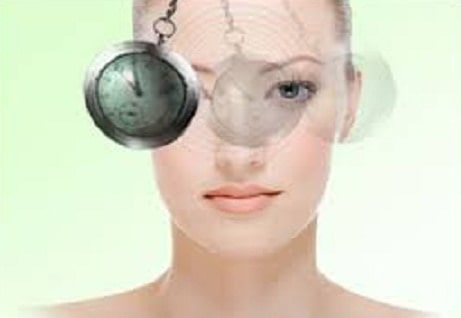
Hypnotherapy
Your mind is an untapped source of amazing power. If you change your mind, you must change your life. Hypnosis has now become widely recognized as the smartest and easiest method we can employ to change our life. Hypnosis for pain management can help with controlling stress, facing our fears and creating an altered state of consciousness. Hypnosis will change your inner mind to help you change your ideas and images about pain. Contact Andrew for a local Hypnotherapist.: [email protected]

Guided Imagery
The power of visualization and guided imagery is one of our most powerful gifts! A healing tool we all have with in us – the “power of the mind!” Learning how to do Guided Imagery has many benefits. Guided Imagery helps us to develop our imagination as a healing tool. The premise is to use “Mind Medicine” to connect the mind and body in order to free ourselves from pain due to ANY Medical Condition. This concept allows us to deepen our abilities to fully relax, quiet the mental chatter and create restful sleep. Learn more about how guided imagery can work for you!
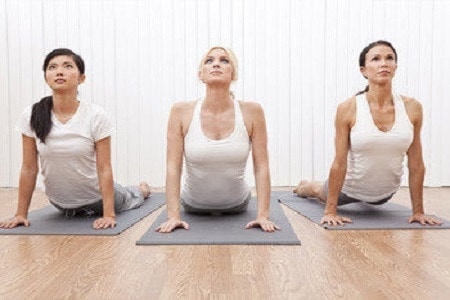
Yoga Therapy
Yoga poses can be good alternatives to “traditional” health remedies because they relax the body and mind, improve circulation and respiration, reduce tension and help the body through it’s healing process. Also consider Cat, Cobra, Laying Down Twist, Child’s Pose, Tadasana, Neck Rotations, Shoulder Lifts…
Deep Diaphragm Breath can also be incorporated. Sit with your legs crossed in a comfortable position. Breathe slowly and evenly from your diaphragm, through your nose. Fill your lower abdomen, lungs, then chest with air. Hold for a four count then slowly exhale the air out from your chest, lungs, then lower abdomen. Repeat 3 or 4 times. That’s it! Just allow your shoulders to drop and your face relax as you breath, deep.

Breath Work
The Yogic breath exercise can be done without instruction, without danger, and with a good chance that your discomfort and stressful feelings will be reduced. Relaxation Breath is the most powerful tool for stress management. Sit up, with your back straight in any position. Place your tongue against the ridge of tissue just behind your upper front teeth and keep it there throughout the exercise. Exhale completely through your mouth.
Close your mouth and inhale quietly through your nose to a mental count of four. Hold your breath for a count of seven. Exhale completely through your mouth, to a count of eight. Repeat this cycle three more times for a total of four breaths. Try to do this breathing exercise at least twice a day. You can repeat the whole sequence as often as you wish, but don’t do it more than four breaths at one time for the first month of practice. This exercise is fairly intense and has a profound effect on the nervous system.
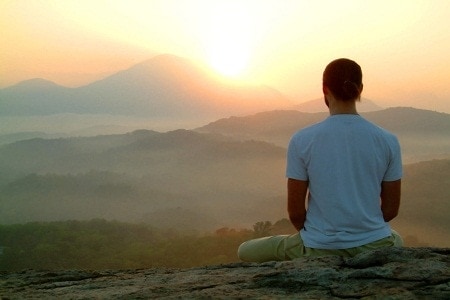
Meditation for Pain
Meditation restructures the mind, allowing us to achieve our full potential as human beings.
Fold your hands gently in your lap and close your eyes. Take a few deep breaths. Then just sit. If you have never meditated before, you will probably feel as if your mind is full of thoughts. Don’t try to stop the thoughts, just watch them. Imagine that you are on the bank of a river and that your thoughts are the river going by. Don’t try to stop the river, just watch it. Within a week, you will see the river begin to slow down. You may become impatient, or even bored. That’s okay. If you find yourself complaining, just watch the thoughts pass by. Do this for 5 to 10 minutes. You may find that you fall asleep because you are so relaxed. That’s good because, in many ways, you have begun to let go. Continue at this pace and each day allow just a little more time for yourself to meditate. Doing this allows you to relax and forget about time.

Color/Light Therapy
Light therapy is now used for medical conditions, such as seasonal affective disorder, emotional, and pain issues. The most common method, called bright-light therapy, requires that patients sit near a special light box fitted with high-intensity, full-spectrum or white light bulbs.
A research review commissioned by the American Psychiatric Association in Washington, D.C., concludes that in trials, daily exposure to bright light is about as effective as antidepressant drugs in quelling seasonal affective disorder (SAD), or winter depression, and other forms of depression associated with pain.
Orange – gives power to remove suppression and inhibitions. It allows you to create ideas and give courage and strength. Symbolic of prosperity and pride, orange is useful for stimulating blood supply and energizing the nerves. It is beneficial in the treatment of kidney and gall stones, hernia and appendicitis. It is also used to stimulate the back muscles, particularly the lower back.
Green – is governed by the Heart Chakra. Green is the harmonizing, balancing energy. It has strong influences on the heart and blood supply. Green has much to do with the way you feel about yourself. It is associated with abundance and giving. It’s strong tie to nature is very important in order to be balanced, peaceful, harmonious.
Turquoise – This soothing combination of both green and blue create a color, which symbolizes ultimate healing. Calming, peaceful, gentle, cooling and non-threatening. Turquoise brings about change, allowing the mind to release and let go of blocked issues that prevent you from moving forward.
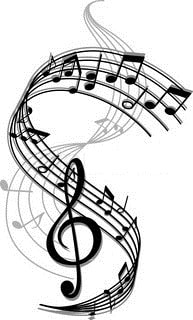
Music/Sound Therapy
Vibrational medicine, which validates that everything in the universe is in a state of vibration and the frequency at which an object or person most naturally vibrates is called resonance. The chakras, bones, and organs in the body all possess a different resonant frequency. When an organ or part of the body is vibrating out of tune or non-harmoniously, it is called “dis ease” or disease. A body is in a healthy state of being when each cell, each organ creates a resonance that is in harmony with the whole being.
Most research focusing on music and pain examines individuals who are experiencing primarily physical pain as a result of surgery. Music therapy as an intervention to address perceived pain due to surgery can be beneficial to patients physically and psychologically. Hospitalization can result in physical stress from invasive surgery and therapies, as well as emotional stress due to unexpected news, unfamiliar environments, and a sense of losing control. There are several theories about how music therapy positively affects perceived pain:
1. Music serves as a distractor.
2. Music may give the patient a sense of control.
3. Music causes the body to release endorphins to counteract pain.
4. Slow music relaxes a person by slowing their breathing and heartbeat.
Music is a powerful tool that can be used in so many ways. It has been proven that the type of music that makes a person relax or become receptive is not any one kind. It all depends on the individual and their affinity with music. It is important to recognize interactions between physical and psychological responses to pain.
Crystal Reference
As a healing tool, crystals have been used for meditation, stress relief, massage and energy work. Crystals offer an additional way to balance energy, amplify both energy and thought, bring clarity in thinking, and harmony and alignment with our own energy systems.
Hematite and Magnetic Hematite, specifically, is an amazing stone that helps to move blood. Studies with hematite show that when the physical stone is taped to the body where there is pain, or on a “trigger point” the magnetic hematite will move the blood out of the area, increase blood circulation, and ease pain.
This stone therapy can also be done with a pair of magnetic hematite stones using the Trigger Point Therapy listed above, under Massage, Trigger Point Therapy, and Chinese Medicine.
Stones can be used for meditation for pain relief, in general. Meditation or guided imagery can help to relieve back pain with the proper techniques.
Meditation & Crystals
Meditation won’t necessarily get rid of your back pain, BUT, it will alleviate much of the angst and anxiety associated with it! Calming the mind and central nervous system have a direct affect on how our body “vibrates” and how we choose to handle stress as it comes at us. The more you meditate, the more able you become in handling difficult situations!
~ Use a crystal of your choice or one mentioned. Sit comfortable on the floor and hold your stone or lie down and place the crystal on your lower back or which ever areas feel under stress. Often times, placing a stone on the Third Eye or on the Solar Plexus can came the body energy down.
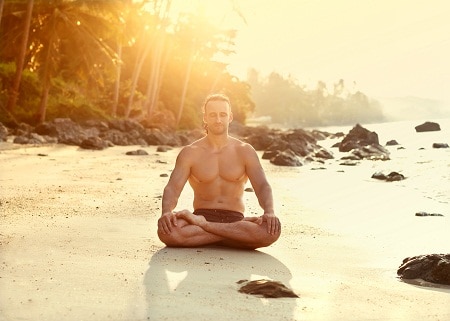
~ Close your eyes. Take several deep breaths. Feel the crystal rise and fall as you slowly inhale/exhale. Allow your body to melt into the floor at each breath. Take this time to find your center. Let go of those things which hold you back. With each inhale, take in that which you deserve. With each exhale, release all that tension.
~ When you feel more calm and connected, slowly open your eyes. Give yourself some time to recover. You may even want to journal about your experience.
Crystal Associations

Study Energy Medicine at Home
The Peacefulmind.com Homestudy Courses make it possible for anyone to study energy medicine at home, on your time! These certifications programs are offered by the National Association of Holistic Wellness
*Transitions: The Transformational Guide and Workbook for Creating Great Health This is the culmination of years of Andrew Pacholyk, MS, L.Ac. clinical work. This is a manual you can use, whether you are healthy or ill or somewhere in between and you want to re-balance your mind, body and spirit to become the whole person you can be! This workbook gives you a plan to take care of yourself. It can be used over and over to find balance and keep yourself as healthy as possible. It gives you “tools” to use when and where you need them. It helps to evaluate where you are in your journey and offers ways to get you exactly where you want to be! Want to know more?
*The “Color Elite” Color Therapy Certification Course Andrew Pacholyk, MS, L.Ac. has finally published his most complete healing course using the power of color and light therapy. This ultimate guide to chromotherapy teaches you about color and every aspect of it, how it is used in different therapeutic settings and how it has become such a great healing modality, no matter what profession you are in you will learn how to incorporate color into your daily life! Want to know more?
*The Crystal Light Crystal Therapy Course This incredible course is our biggest and most popular course on the internet! This is the study of crystals and how to heal with earth’s precious gems! Want to know more?
*Chakracology – A Workbook and Manual This workbook format allows you to look at the energy of the Chakra and how they affect us on a daily basis. The book allows you to work through each center on a mental, spiritual, as well as a physical level and then find ways to re-align, balance and manage your energy in a positive way! Want to know more?
*The Healing Art of Touch – Massage Therapy Homestudy Learn the art of touch and massage therapy through Andrew’s very extensive course. Complete anatomy lessons, varied techniques and amazing information is offered in this course. Also learn the business aspects of massage, how to cope with clients that are difficult and energy transference are just a few of the many topics covered! Want to know more?
*What’s Your Heart Telling You? Finding Love and Romance – The Workbook and Journal Andrew Pacholyk, MS, L.Ac. has now published his newest work based on years of personal intimacy, clinical experience, counseling and client research on the ways to navigate love, sex, romance and relationships in a modern day world. Andrew has devised this very thorough workbook and journal with questionnaires, exercises, quotes, tips, meditations, feng shui, aromatherapy, massage and herbal applications for creating the perfect scenario for finding, coping and keeping love in your life! Want to know more?
*The Feng Shui Journal The Peacefulmind.com Feng Shui Journal makes it possible for you to improve relationships, maximize career potential and enhance your environment! * We are honored to offer the Feng Shui Journal for beginner to advanced Feng Shui practitioners. This journal covers an extensive background on Feng Shui techniques history, usage, clearing, cleansing, manifesting and helpful information in order to bring balance back into your life! Want to know more?
What are your experiences with back pain?
Sharing your own experiences often helps others. We’d love to know in the Peacefulmind Community.
Questions? Comments! Order Help? Please Contact Us
